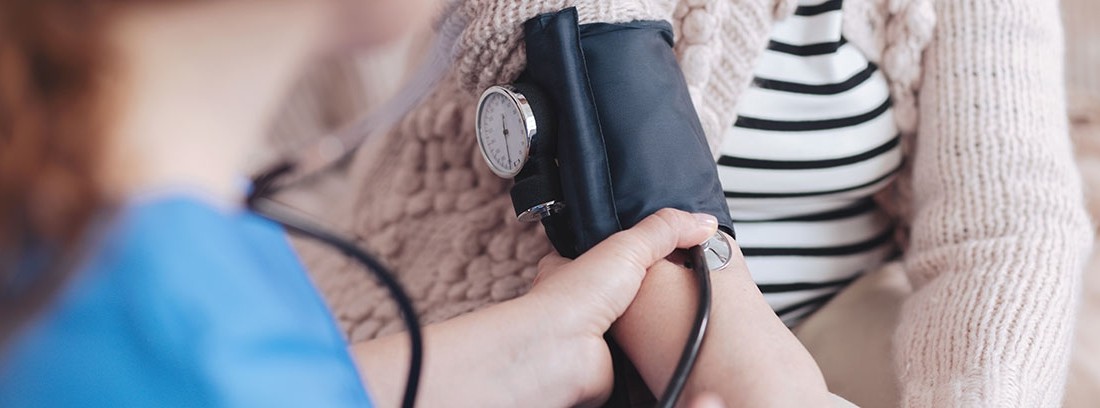Orthostatic hypotension

The hypotension most often experienced by the elderly and which can lead to serious consequences, such as falls, is called orthostatic hypotension. This is defined as a drop in systolic blood pressure greater than or equal to 20 millimeters of mercury (mm Hg) or in diastolic blood pressure greater than or equal to 10 mm Hg that occurs within 3 minutes of going from lying down to lying down. standing.
The prevalence of orthostatic hypotension is between 4 and 33% of the elderly population. In diabetic patients a prevalence that can reach 19% has been seen, although the highest prevalence has been observed in Parkinson's patients, with figures of 60%.
The causes of orthostatic hypotension are multiple. Broadly speaking, they could be classified as neurogenic and non-neurogenic. These are, summarizing:
Neurogenic causes
-
Primary:
- Vegetative alteration in Parkinson's disease.
- Acute or subacute dysautonomias.
- Pure autonomic failure or multisystem atrophy.
-
High schools:
- Vasovagal or voiding syncope.
- Peripheral alteration: diabetes mellitus, amyloidosis, chronic alcoholism, other neuropathies.
- Central alterations: tumors, senile degeneration.
- Spinal disorders.
Non-neurogenic causes
-
Decreased intravascular volume
- Loss of blood or plasma: bleeding, burns, hemodialysis.
- Loss of mineral salts: acute gastroenteritis, inadequate intake, anorexia.
- Vasodilation: alcohol, ambient heat, fever, severe urticaria.
- Cardiac pathology: heart failure, arrhythmias.
- Drugs
Among the non-neurogenic causes, orthostatic hypotension produced by drugs should be highlighted, due to its great importance. These substances may be used properly as hypotensive drugs or may have hypotension as a side effect. In general, three mechanisms of hypotension can occur: decrease in total blood volume (diuretics), production of vasodilation (nitrites) or interference with baroreceptor reflexes (antidepressants, sedatives).
When a healthy adult rises from a supine position to an upright position, about 500-700 ml of blood accumulates in the venous circulation of the lower extremities, as well as in the circulation of the viscera. This specific reduction in blood volume produces a drastic decrease in venous return to the heart and a drop in its efficiency. This produces a generalized neurological, cardiovascular and even muscular reaction to keep blood pressure within the limits necessary to, at least, ensure cerebral circulation.
Older age, drugs, and certain diseases can promote hypotension. This makes the elderly very susceptible to suffering from orthostatic hypotension, since it is in this age group that the greatest number of medications are consumed. In addition, in the elderly a whole series of alterations due to age occur, both in the cardiovascular system and in the reaction capacity of the nervous system.
The symptoms of orthostatic hypotension derive from the decrease in the blood supply to the tissues, especially from the accompanying transient cerebral ischemia, apart from the symptoms associated with the possible etiologies mentioned above. It should be noted that loss of consciousness and associated falls may appear in up to 50% of symptomatic patients. In heart disease patients, the decrease in the amount of blood pumped by the heart and the resulting reactive tachycardia can cause anginal symptoms.
In general, the most common symptoms of orthostatic hypotension are the following:
- Dizziness, instability, positional vertigo, falls.
- Unstable gait, insecurity.
- Loss of consciousness, syncope.
- Tachycardia, paleness, angina pectoris.
- Blurred vision, black spots or defects in the perception of colors and images.
- Tinnitus.
As a general rule, only symptomatic orthostatic hypotension should be treated, the therapeutic objective being in most cases the elimination of symptoms regardless of the blood pressure values.
Education of the patient with orthostatic hypotension is an element of the utmost importance. In addition to a clear explanation of the nature of their symptoms, the general measures to be applied can be categorized into four groups: a) avoiding activities or habits that can precipitate or aggravate postural hypotension; b) normalize the circulating volume and avoid its fluctuations; c) wear compression garments; and d) avoiding harmful medications.
The patient must learn to decompose the movement of getting up from the bed into two movements, lying-sitting and sitting-standing, allowing several minutes to pass between one posture and the other. In addition, you should avoid standing still for a long time, intense physical exertion, isometric exercise, exposure to hot and humid environments, and eating large meals. Walks and swimming are advisable therapeutic measures, provided they are practiced lightly and within tolerance.
The administration of diuretics should be discontinued and a diet abundant in fluids and without restriction of salt intake should be established. Sleeping at night with the headboard raised by 25 to 30 cm also leads to a greater expansion of intravascular volume, due to hormonal mechanisms of cardiovascular compensation.
Improving venous return during standing is achieved through the use of elastic stockings with gradually decreasing pressure from the ankles and extending to the waist. These garments should be put on in the morning while the patient is still lying down and removed before going to bed at night.
It should be made clear to patients early on that the treatment of orthostatic hypotension, especially that due to vegetative dysfunction, is often difficult and imperfect. Often the drugs must be administered in combination, as in essential hypertension. For this reason, treatment should be based mainly on non-pharmacological therapy.
(Updated at Apr 14 / 2024)